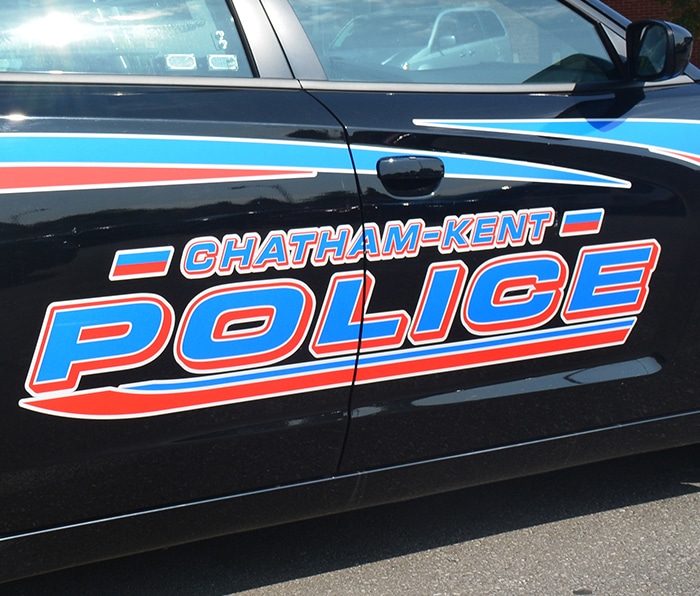
Before municipal councillors break out their carving knives, the proposed 2020 municipal tax increase sits at nearly five per cent.
Chatham-Kent administration released the information at a special budget meeting Jan. 15, with the proposed budget for the year armed with a tax increase of 4.99 per cent.
Don Shropshire, CAO, said provincial downloads account for an increase of 1.49 per cent, committed funds for infrastructure lifecycle funding add another one per cent, plus there is additional funding for disaster mitigation, storm sewer management and funding for “previous council decisions and requisitioning bodies.”
Chatham-Kent still faces tax difficulties such as low population density; thousands of kilometres of roads, both paved and gravel; and more than 800 bridges (five per cent of all the bridges in Ontario are here, but we have 0.7 per cent of the population).
Shropshire said there are indicators, however, that we are seeing population growth after years of slow decline, meaning there are more people here paying property taxes.
Gord Quinton, CFO for the municipality, said the draft budget was shaped with requests by council in mind.
“Council has directed us to bring a budget with inflation and meeting our asset management plan,” he said.
Brock McGregor, budget chair, said the draft budget’s proposed increase wasn’t a surprise.
“We’ve given staff direction to look at the CPI (Consumer Price Index) increase and one per cent towards asset management, and then you add on the 1.5 per cent for provincial downloading and that’s where we’re at,” he said.
Quinton said the provincial downloading is a reality this year that can’t be ignored.
“The bottom line is they have chosen to transfer from income taxpayers to property taxpayers a 1.49-per-cent tax increase. It’s a one-time thing we have to deal with,” he said. “I don’t think there was any expectation to slash and cut services to make up for that provincial decision.”
Other factors contributing to the increase this year include items such as topping up the road salt budget for Public Works. Quinton said council took $500,000 out of the budget for the purchase of road salt annually back in 2013.
“But there was no cut in service. This set up Public Works to have a continued deficit. We’re rebuilding that over four years,” he said. “Council approved the first $125,000 last year.”
If administration had included all requests for additional funding, Quinton said the draft budget would have contained a proposed increase of close to 12 per cent, and a “status quo” budget would have seen a slight reduction of 0.04 per cent.
“There are lots of new items in the budget that council has identified in its 2018-2022 goals, for example money for social housing, a lot of fire equipment that was in need of repair, and life guard wages,” he said.
McGregor expects the proposed increase to drop as council holds its budget sessions.
“The expectation is we’ll be able to move that number down, but how we do that is a big part of it. We have to be listening to the community and making sure the budget reflects that,” he said.
McGregor said council needs to follow the desires of the community in terms of where spending priorities need to be, but also has to work to not push expenses to the next budget or beyond.
“We have to examine how the budget looks at future years and how prepared we are for what’s coming down the road,” he said. “You have to make sure you aren’t adversely impacting future years.”
Previous councils delayed lifecycle funding for infrastructure, such as road, bridges and buildings, and it resulted in the need to commit one-per-cent budget increases annually to help top up that funding.
McGregor said that funding helps prepare for big-ticket needs when they come due, such as bridge replacements.
Additional funding for infrastructure this year includes $550,000 for storm sewers and $517,000 for disaster mitigation and adaptation funding.
McGregor said the money for disaster mitigation is necessary in order to receive additional funds from the federal government.
“You have to spend some dollars in order to get dollars at times from senior levels of government,” he said. “Disaster mitigation funding – getting support from senior levels of government involves having local funding.”
The funding is earmarked to address flood management, McGregor said.
He added council’s efforts in tackling the budget can at times be a balancing act, made more difficult when there is provincial downloading.
“We’re looking to do things as efficiently as possible while maintaining and prioritizing what is important in the community,” he said. “It is always easier to put together a budget with a minimal impact when you are seeing new sources of funding from senior levels of government. All budgets are about finding the most economical way to have long-term impact on the community.”





